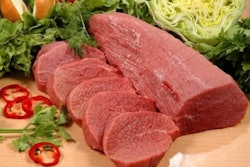The rendering industry collects and processes roughly 25 million tons of animal byproducts each year in the US. Recycling these byproducts into various protein, fat and mineral products greatly enhances the sustainability of animal food production, including pet food, and the use of these materials in pet food is a much more sustainable model than using human food.
The main requirements in the diets of animals are protein, energy and minerals, and rendered animal products are an excellent source of all three, according to research. Rendered protein meals such as meat meal, meat and bone meal, poultry meal, poultry byproduct meal and fish meal are widely used in pet foods, and in general rendered products provide high-quality protein with a good balance of AA.
Meat consumption by humans increases as median income rises. Byproducts from meat production are inevitable and responsible use is imperative. The byproducts from food animal production can be rendered into safe and nutritious pet food ingredients. Feeding animals is a greater value use for byproducts than other alternative uses such as energy or fertilizer; therefore, feeding byproducts to animals improves the sustainability of the industries from which the byproducts are derived.
Source: D.L. Meeker and J.L. Meisinger, 2015. Companion Animals Symposium: Rendered ingredients significantly influence sustainability, quality and safety of pet food. J Amin Sci online, March 2015. doi: 10.2527/jas.2014-8524.
















